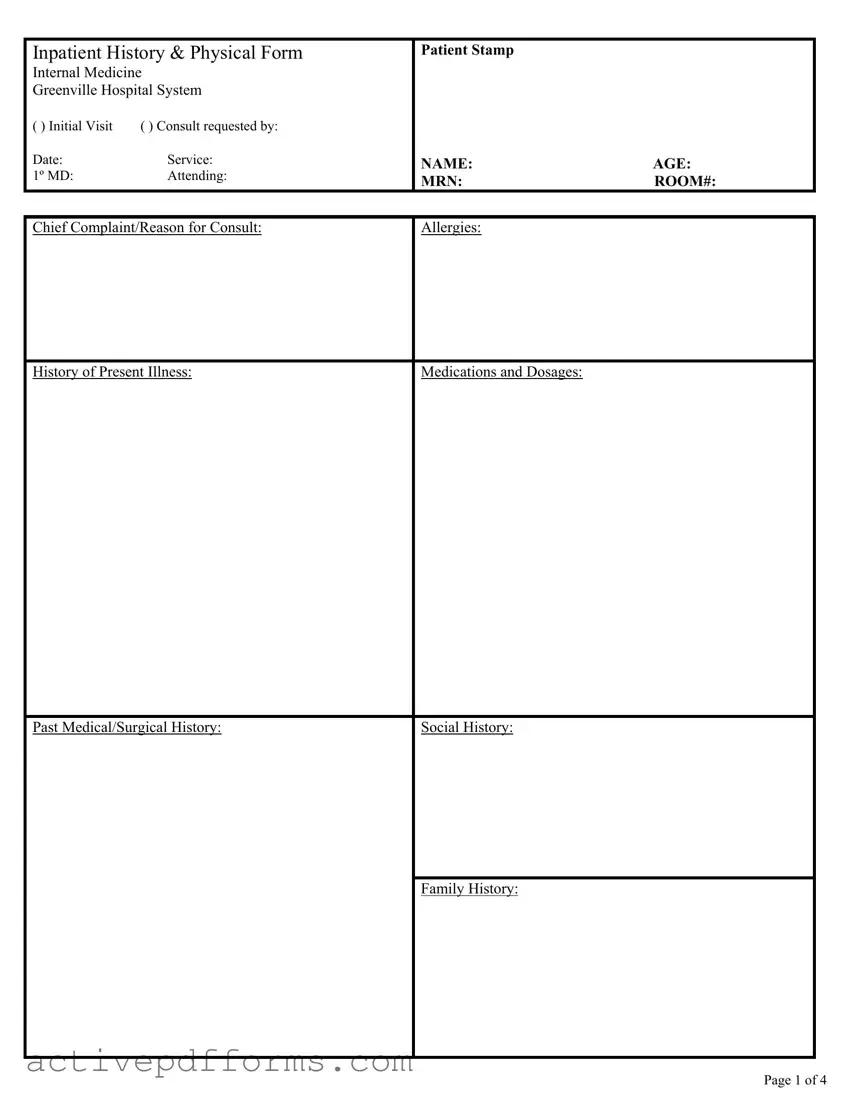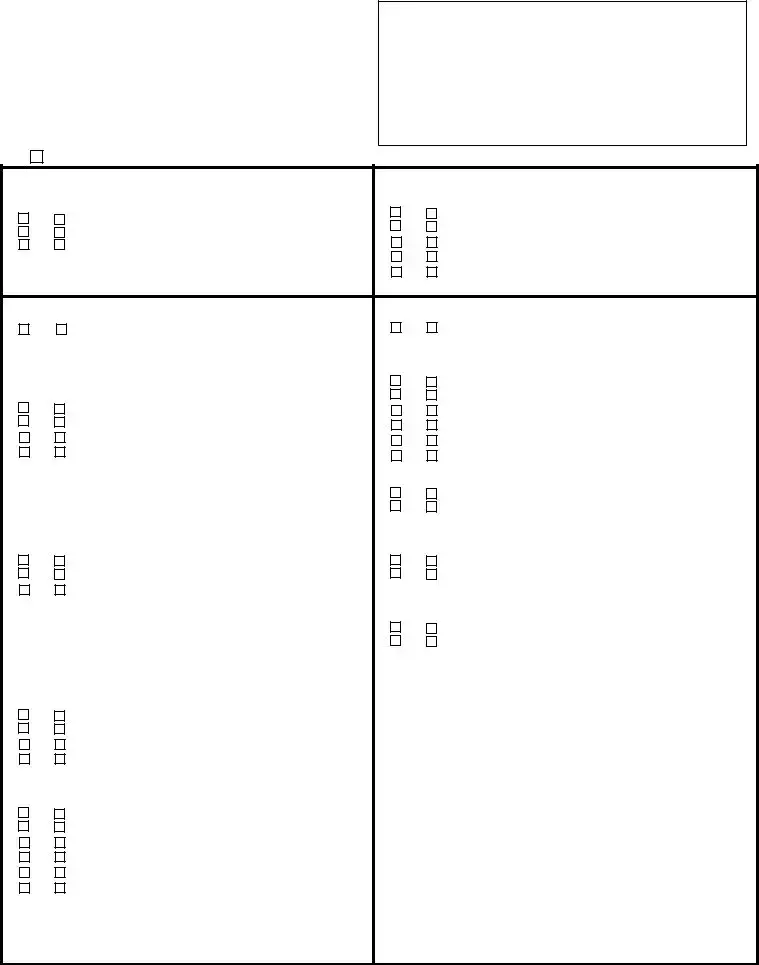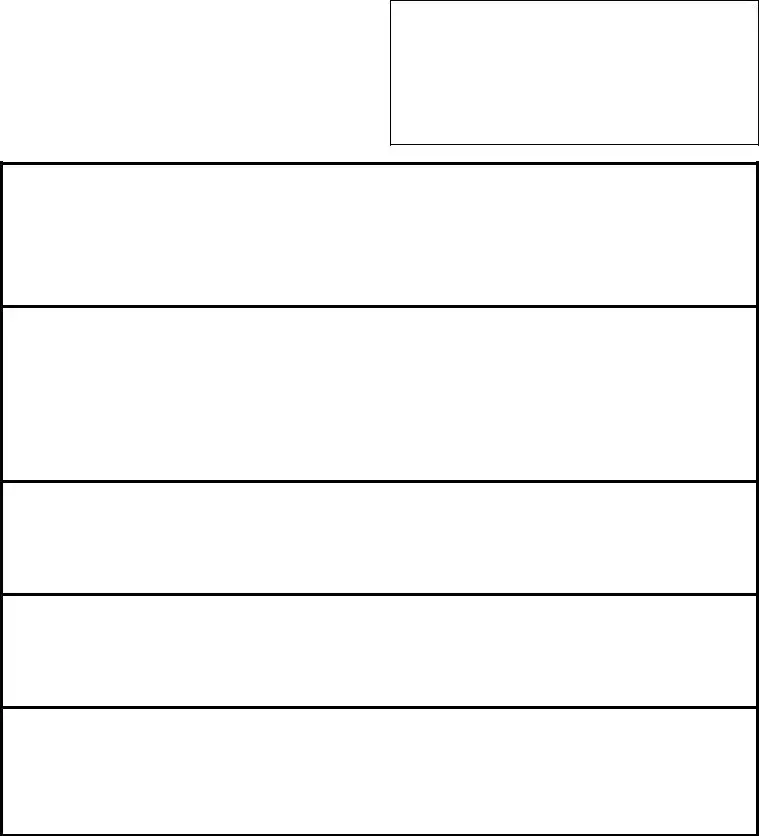The History and Physical (H&P) form is a cornerstone document in medical charting, serving as a comprehensive tool designed to collect vital information about a patient's medical background and current state of health. Developed for use within inpatient settings, this form is instrumental in the Internal Medicine department at the Greenville Hospital System. The form is meticulously structured to begin with basic identifications such as patient stamps and personal information, extending to more detailed inquiries about the patient's chief complaint or reason for the consult. It delves into a systematic examination of the patient's allergies, history of present illness, ongoing medications and dosages, and recounts the past medical and surgical history, rounding out with social and family histories. What follows is a comprehensive review of systems (ROS), covering everything from constitutional symptoms to genitourinary, musculoskeletal, neurologic, and many other bodily systems, asking for descriptions of symptoms to ensure nothing is overlooked. The physical exam segment is equally rigorous, detailing observations and findings from head to toe, including vital statistics, systemic reviews, and descriptions of any noted abnormalities. Lab results and studies are integrated into the assessment, ensuring a holistic view of the patient's health. The concluding section focuses on the assessment and plan of care, capturing the attending physician's synthesis of the H&P information with signatures from the involved healthcare professionals, illustrating the collaborative effort in patient care management. As such, the H&P form stands as a critical tool, ensuring comprehensive patient evaluation and guiding personalized treatment strategies.




